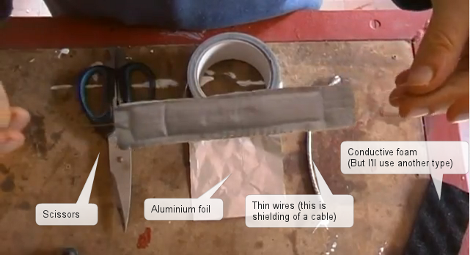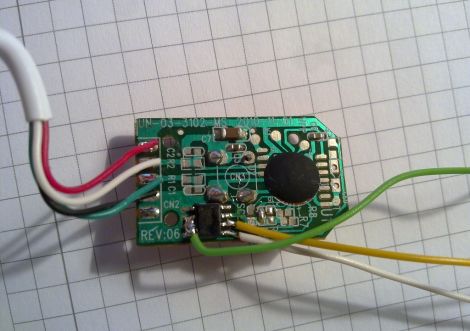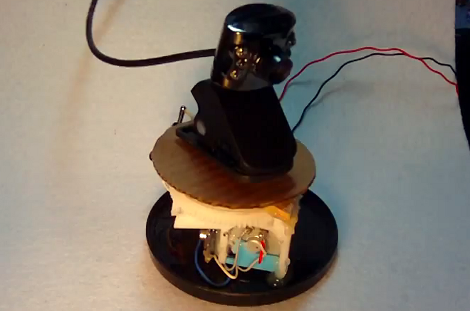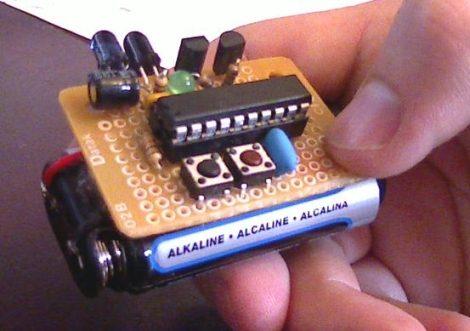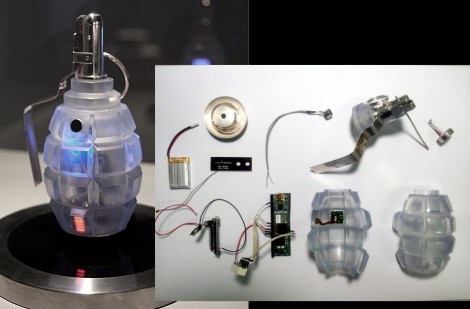Hacks like this one don’t help us recover from extreme pack-rat behavior. Driving home the point that one should never throw anything away [Peter] built a flex sensor from component packing material. It uses the black conductive foam in which integrated circuits are sometimes embedded for shipping. Above you can see the grey rectangle which is the sensor itself. in the background of the image, each component used in the build is labelled except for the tape.
The project starts with the foam being cut to the appropriate size and thickness. He does the same with some aluminum foil, then rips tape strips to act as the enclosure. Fine wire from some cable shielding serves as the two conductors for the sensor. He attaches each wire to an upturned piece of tape, followed by the foil, and finally the foam. When the two halves are assembled in the video after the break, [Peter] hooks up his multimeter to show the change in resistance as the sensor is bent.
We think it will take a clever calibration algorithm to get this working reliably, but it’s no more troublesome than the optical flex sensors we saw in this links post. Continue reading “Building A Flex Sensor From Component Packing Materials”

